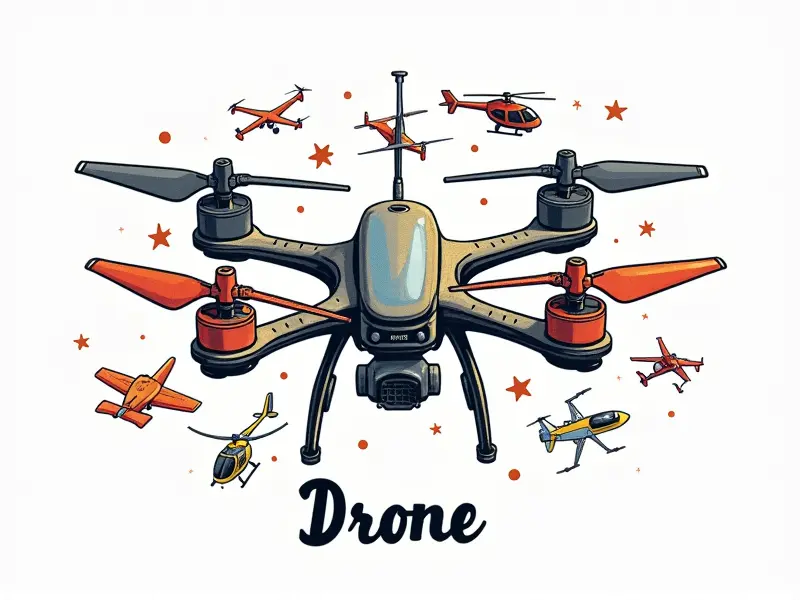Brushless Motor FAQs

Brushless Motors: The Ultimate Guide to Understanding and Utilizing RC Powerhouses
What Are Brushless Motors in RC?
Brushless motors, also known as BLDC (Brushless DC) motors, are a type of electric motor commonly used in radio-controlled (RC) models such as drones, cars, boats, and airplanes. Unlike traditional brushed motors, brushless motors do not use mechanical brushes to transfer electrical current to the rotor. Instead, they rely on electronic commutation, which significantly reduces friction, wear, and tear, leading to higher efficiency and longer lifespan.
How Do Brushless Motors Work?
The operation of a brushless motor is fundamentally different from that of a brushed motor. In a brushless motor, the rotor contains permanent magnets, while the stator consists of windings or coils arranged in a fixed position around the circumference of the motor. A control circuit, often called an electronic speed controller (ESC), manages the flow of current to the coils.
The ESC switches the direction and intensity of current through the coils at precise intervals as the rotor rotates. This switching mechanism is known as commutation. By precisely controlling the timing and sequence of this process, the motor generates a rotating magnetic field that drives the rotor, enabling the motor to spin continuously without mechanical brushes.
Types of Brushless Motors Explained
There are several types of brushless motors used in RC applications:
- Inrunner Motors: These have a standard configuration where the stator is stationary and the rotor rotates inside it. Inrunners provide high torque at low speeds, making them ideal for tasks requiring short bursts of power.
- Outrunner Motors: Outrunners feature a design where the outer casing of the motor itself acts as the rotor. The stator remains stationary within the center of the motor. This type offers better torque at higher RPMs, making them suitable for high-speed applications like propellers on drones.
- KV Motors: KV (Kilovolt) ratings indicate the number of rotations per minute (RPM) a motor produces per volt applied to it when unloaded. This rating is crucial in determining the performance characteristics of brushless motors.
Choosing the Right Brushless Motor
Selecting the appropriate brushless motor for your RC project depends on several factors:
- Application: Consider whether you need a high-torque inrunner or a high-speed outrunner.
- Duty Cycle: Determine if continuous operation is required, or if the motor will be used intermittently.
- Power Requirements: Assess your power supply and voltage limitations.
Common Issues with Brushless Motors
While brushless motors are highly efficient and durable, they can still encounter issues such as:
- Overheating: Excessive heat due to prolonged use or insufficient cooling.
- Electrical Noise Interference: This occurs when the ESC does not properly filter out electrical noise from other components.
- Mechanical Failure: Despite their robust design, mechanical failures can occur if the motor is subjected to harsh conditions or improper maintenance.
Efficiency of Brushless vs. Brushed Motors
The efficiency advantage of brushless motors over brushed motors is significant due to several factors:
- No Mechanical Friction: The absence of brushes eliminates mechanical wear and tear, leading to higher efficiency.
- Better Heat Management: Brushless motors generate less heat during operation compared to brushed motors.
- Longer Lifespan: With no brushes to replace, brushless motors can last much longer than their brushed counterparts.
Upgrading to Brushless Motors Guide
Migrating from a brushed motor setup to a brushless one involves several steps:
- Evaluate Your Needs: Determine the specific requirements of your RC model and choose an appropriate KV rating.
- Select Compatible Components: Ensure that your ESC, battery pack, and propeller are compatible with brushless motors.
- Install and Test: Carefully install the new motor and test its performance under various conditions to optimize setup.
Understanding KV Ratings in Brushless Motors
The KV rating of a brushless motor is crucial for determining its RPM output. It indicates how many RPMs the motor will achieve per volt applied when unloaded:
- Low KV Motors: Ideal for high-torque applications such as winches or heavy lifting.
- Moderate KV Motors: Suitable for general use and versatile performance in various RC models.
- High KV Motors: Best for achieving maximum speed, typically used in racing drones or high-speed vehicles.
Maintenance Tips for Brushless Motors
To ensure optimal performance and longevity of your brushless motor:
- Cooling: Use proper cooling solutions such as fans or heat sinks to prevent overheating.
- Proper Lubrication: While brushless motors do not require lubrication for the brushes, ensure that bearings are properly maintained.
- Regular Inspection: Periodically check connections and wiring for any signs of wear or damage.
Comparing BLDC and Brushed Motors
The primary differences between brushless DC (BLDC) motors and brushed motors are summarized below:
- Efficiency: BLDC motors are more efficient due to their lack of mechanical brushes.
- Durability: BLDC motors have a longer lifespan because they do not suffer from brush wear.
- Noise and Heat: BLDC motors generate less noise and heat compared to brushed motors, contributing to smoother operation.
Boost Your Drone's Performance: Brushless Motors
Incorporating brushless motors in your drone can significantly enhance its performance. By choosing the right KV rating and ensuring proper setup and maintenance, you can achieve:
- Better Flight Time: Increased efficiency means longer flight durations.
- Higher Speeds: BLDC motors enable faster speeds with superior control.
- Smoother Operation: Reduced noise and vibration lead to a more enjoyable flying experience.
Conclusion
In summary, brushless motors offer numerous advantages over traditional brushed motors in RC applications. Their efficiency, durability, and ability to provide superior performance make them an excellent choice for enthusiasts looking to enhance their models' capabilities. By understanding the intricacies of brushless motor technology and following best practices for selection, installation, and maintenance, you can unlock the full potential of your RC projects.

